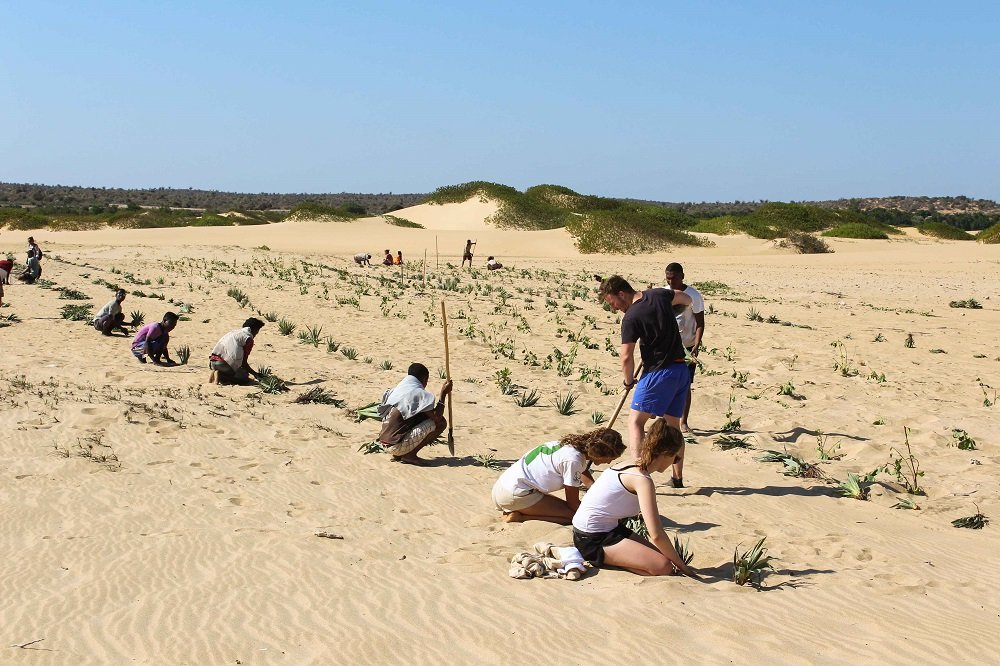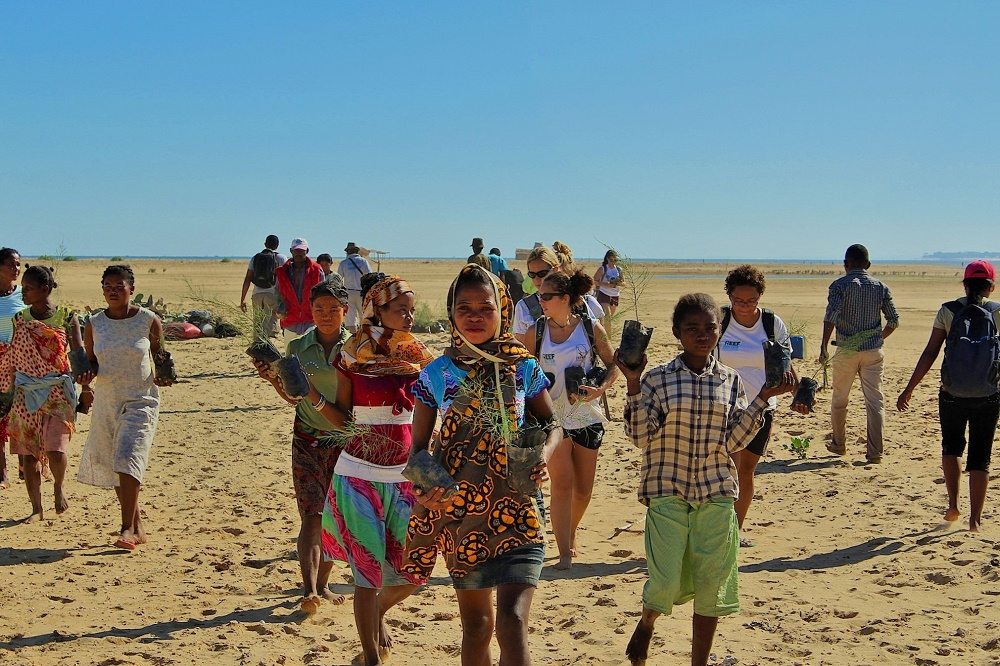We work with the local community to manage and restore degraded areas of mangroves
Mangrove Management
The most effective and long-term solutions to safeguard habitats lie in the hands of local communities. The Reef Doctor Honko Project strives to build local peoples’ expertise and capacity in natural resource management and mangrove restoration. In 2010, with help and encouragement from Honko’s original founders, the local community mangrove association VOI Mamelo Honko (comprising representatives from the five villages surrounding the Ambondrolava mangrove complex) was formed with the purpose of improving community-based management of the forest. A transfer de gestion was completed to obtain full management rights over the forest and associated reed wetlands. This led to the formulation of the dina (local law) governing the use of the mangrove’s resources. There are currently around 700 members in VOI.
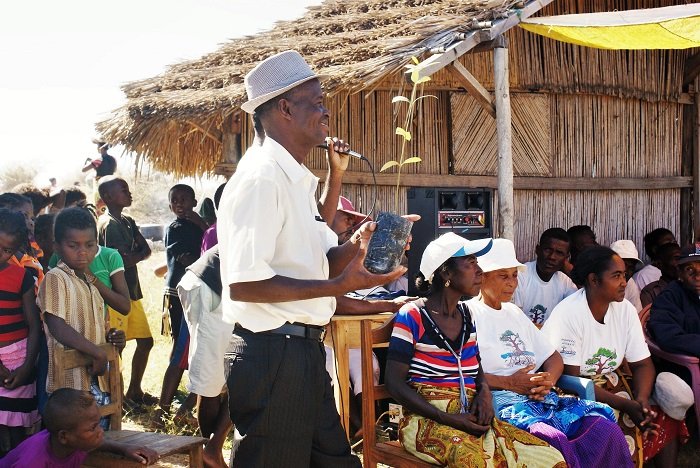
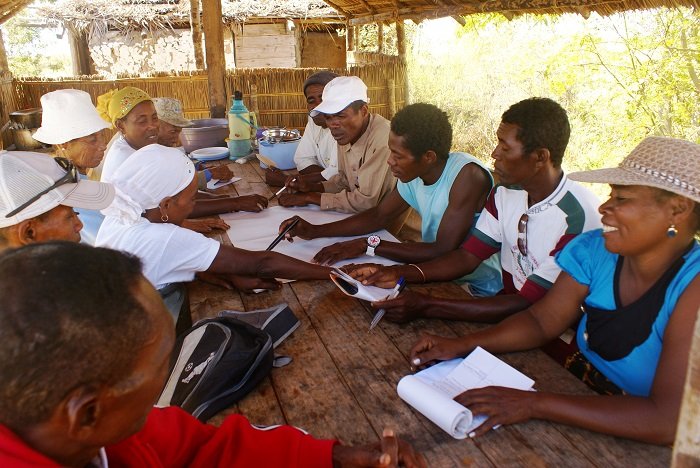
VOI’s successful enforcement of the dina has resulted in a ban on charcoal production within the mangrove and the establishment of temporary mangrove fishing reserves to protect important fish nurseries from over-exploitation. The channel within the mangrove forest is divided in half and every 3 months one half is closed while the other is open as part of a sustainable community-managed mangroves fisheries programme. We also run a programme of education and communication within local communities to raise awareness and build local peoples’ expertise in sustainable fisheries management.
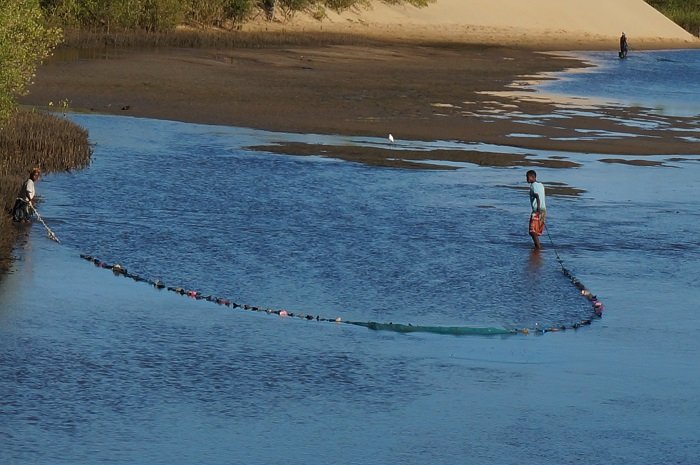
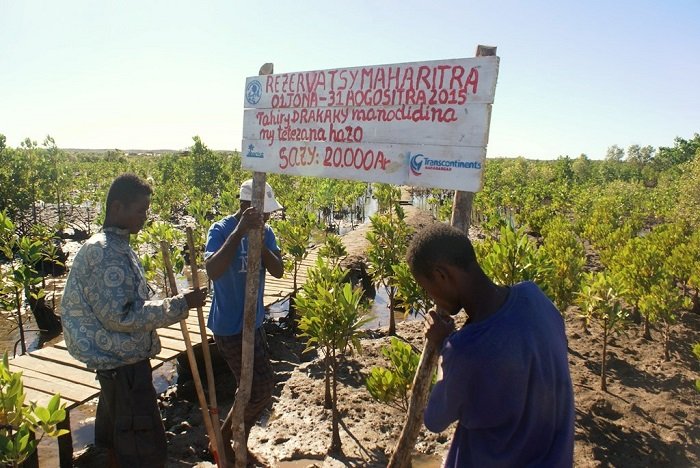
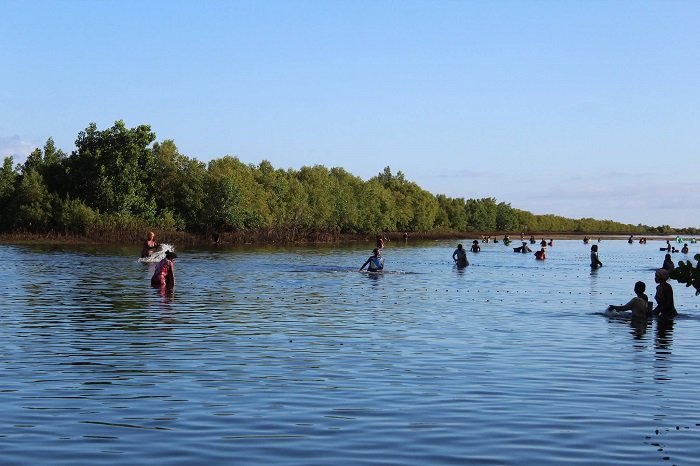
The Reef Doctor Honko Project continues to work with VOI, providing technical assistance and capacity building to improve their mangrove management activities and decision-making ability as an association. In order for VOI to reach a full independence, mangrove ecotourism has now become their responsibility. We are also implementing a mangrove monitoring programme in order to assess and track mangrove health, with the aim to train local communities in this activity.
Mangrove Restoration
Honko placed a large importance on building the capacity of VOI Mamelo Honko and the local community to effectively restore deforested and degraded areas of the mangrove forest. These community-based planting efforts have resulted in over 400,000 seedlings/propagules planted across 40 ha since 2009. As a result, community members in the project area have become regional experts on mangrove plantations and have been called on by numerous NGOs and associations to share their expertise with coastal communities across Madagascar. With funding acquired through GEF Small Grants Program (SGP) in 2014, VOI built and maintained a mangrove tree nursery (Avicennia marina), from which over 1000 seedlings have been planted by community members. Between 2016-2017 over 10 ha of mangroves were planted by communities through various funding (WHH, FRDA, and ADES).
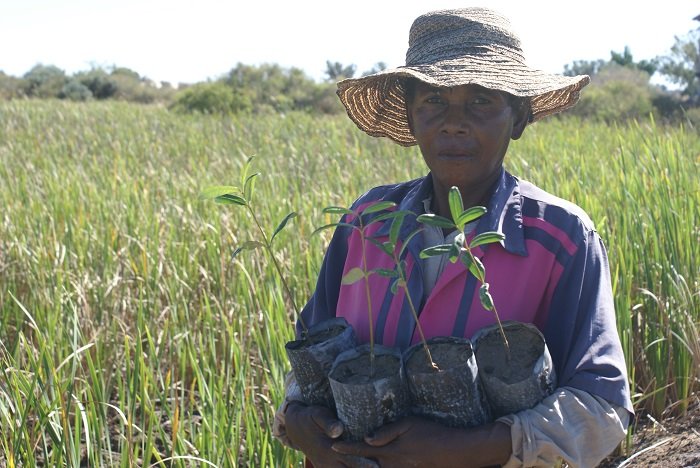
Following the inception of the Reef Doctor Honko Project in January 2017, community mangrove planting events have grown in effort and scale across the region. We have focused on replanting degraded mangrove forests in both Ambondrolava and Andrevo. These areas are important targets for replanting because they both have existing mangrove forests that have been degraded through over exploitation.
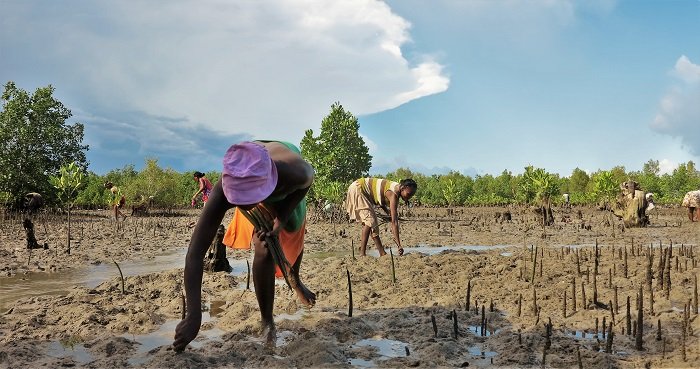
Our recent replanting efforts have been co-funded by FRDA, the Darwin Initiative, the Rufford Foundation, WHH Toliara, and ADES Toliara, and were implemented in collaboration with CDR (Direction Regionale Des Ressources Halieutique et de la Peche), DREEF (Director Regionale de L’Environment, de L’Ecologie et des Forets), and IHSM (Institut Halientique et des Sciences Marine). In March 2017, an impressive 51,426 propagules of Rhizophora mucronata and Ceriops tagal were planted over 5.32 hectares in Andrevo, and 88,630 propagules were planted over 8.84 hectares in Ambondrolava. Local communities are tasked with monitoring the growth and progress of the mangrove propagules on a monthly basis and protecting the replanted areas.
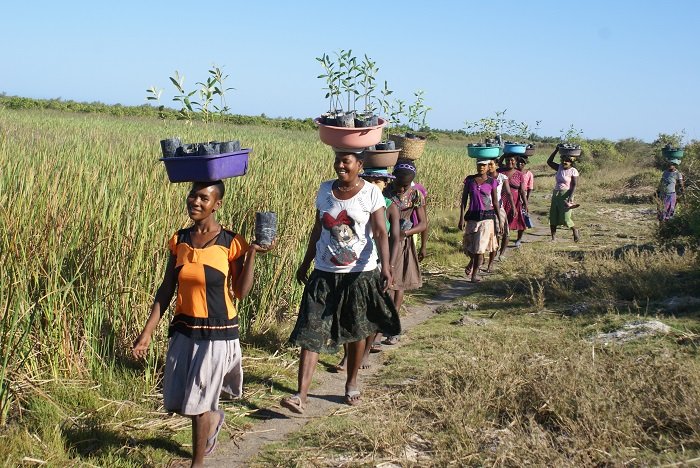
Large-scale community planting events continue on a regularly basis, please check out our blog for recent updates and project progress.
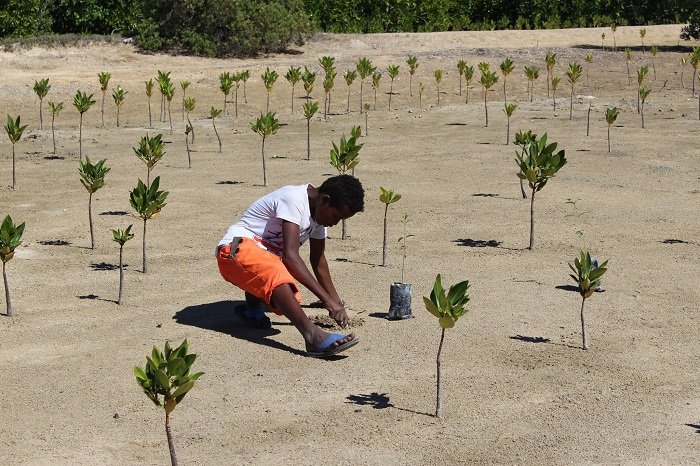
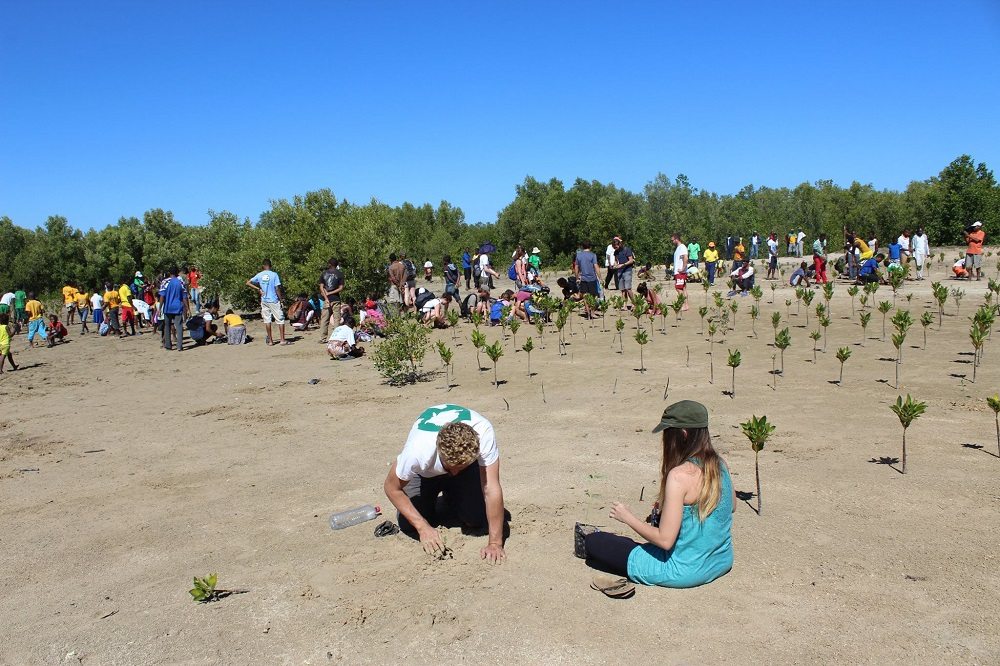
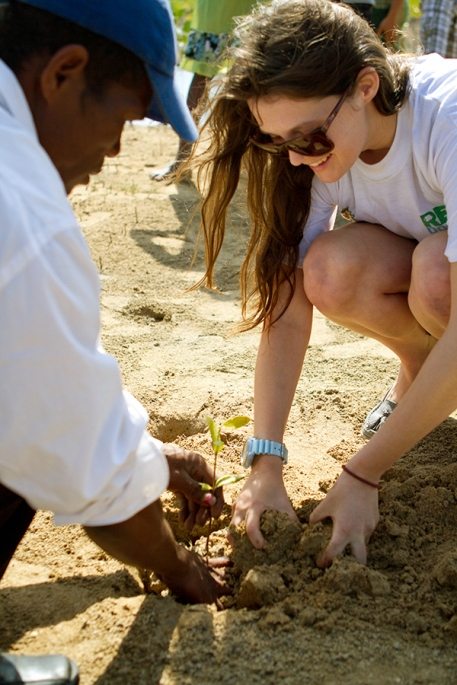
Dune Stabilisation
The Songeritelo sand spit is a major threat to the Ambondrolva mangroves. It has been growing northwards at an alarming rate of 45 m/year since 1949. This rate has increased over recent years (to almost 90 m/year between 2011 and 2017), probably due to major deforestation and erosion inland. The channel that brings seawater to the Ambondrolava mangrove system, located to the east of the sand spit, is under threat from this dune mobilisation; the potential reduction in seawater supply in the coming years threatens the balance of the mangrove ecosystem. In 2017, we began a study on the evolution of this sand spit, developed a stabilisation plan, and participated in a community-based dune stabilisation planting event with YSO (Young Researcher Organization of Madagascar). In this stabilisation event, around 4000 saplings were planted in total, the three main species included filao (Casuarina equisetifolia), sisal (Agave sisalana) and lalanda (Ipomoea pes-caprae). Sisal and lalanda help stabilise sandy areas, while filaos were planted to help sisal and lalandas in their ecological role by acting as a fixing agent. Over time, the filaos should grow tall and wide enough to act as a solid barrier against the wind, which would help stop the movement of the sand and hence the advancement of the dune. We are now placing importance on building the capacity of the local community to effectively stabilise the dunes by creating a community-based management plan of this area including the irrigation and protection of the replanted areas.
